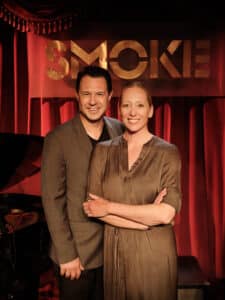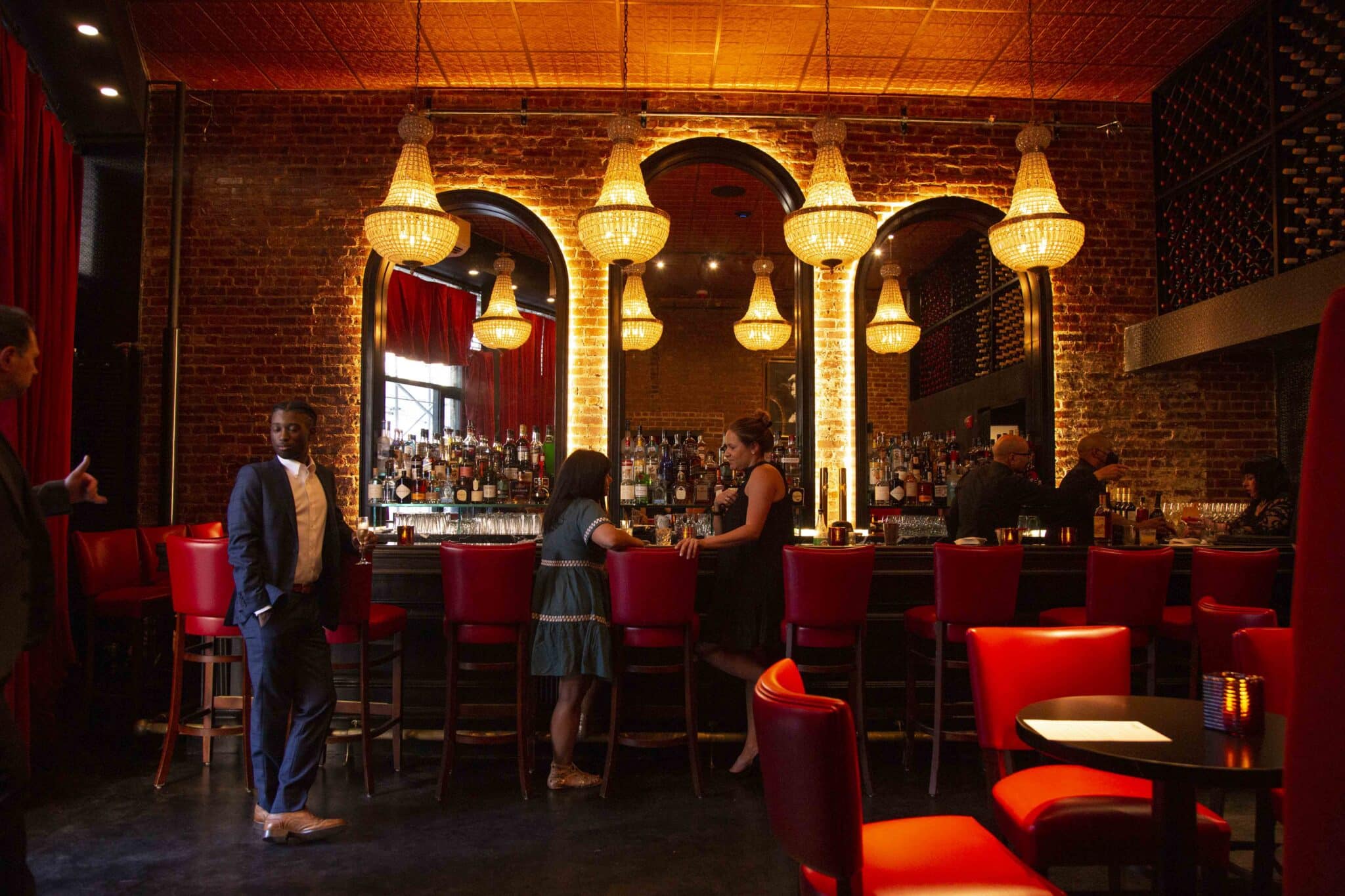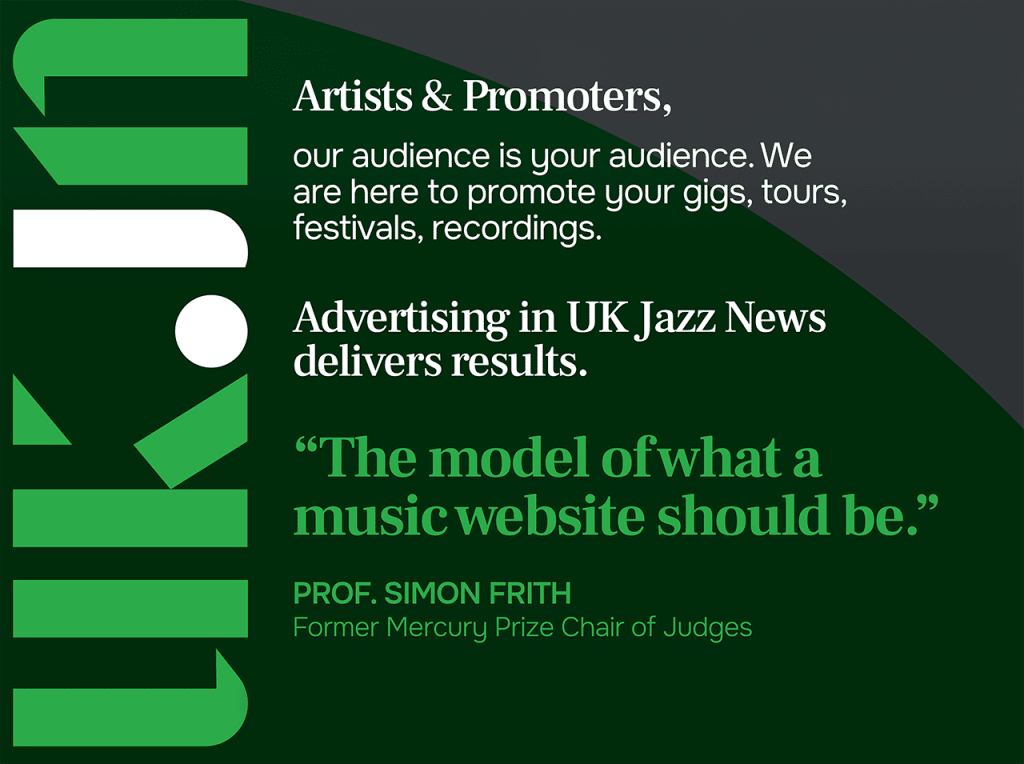Separate from his regular Mondays with Morgan column, jazz journalist Morgan Enos reached out to two NYC jazz veterans – saxophonist Vincent Herring and drummer Joe Farnsworth – to discuss their roles in the swinging legacy of Smoke Jazz Club, one of the pre-eminent jazz clubs in Manhattan. Paul Stache, the co-founder of Smoke, also offers expressions.
Just in time for April – Jazz Appreciation Month – Smoke is ringing in its 25th anniversary with a number of celebrations.
From 10 to 14 April, saxophone legend George Coleman and guests – including Farnsworth – are booked. From 17 to 21 April, there will be a tribute to the titanic Joe Henderson, billed as “Ode to Joe,” featuring trumpeter Nicholas Payton, drummer Al Foster, and more. Lastly, from 24 to 28 April, the great pianist Jacky Terrasson will perform with his trio, featuring bassist Burniss Travis and drummer Alvester Garnet.
Ticket links can be found at the bottom of this article. These are edited excerpts from three separate conversations.
UKJazz News: How did Augie’s, now Smoke, come into your life?
Joe Farnsworth: I would say it was probably 1986. I went to school at William Paterson College [in Wayne, New Jersey]. My brother, John, lived on 106th and Amsterdam, so I would go in every weekend – Augie’s was on 106th and Broadway. So, we’d stop through there and see people playing.
Vincent Herring: I used to go more as a listener. I would go and hear bands. And I would play chess with the owner, who was borderline inebriated. But he was a jolly guy, and I enjoyed his company. His name was, I believe, Gus.
JF: It wasn’t really until 1989 – I remember [guitarist] Peter Bernstein playing there with [drummer] Bill Stewart and [keyboardist] Larry Goldings. I think it was a Thursday night. Bill Stewart was at school with me, so it was a big deal that they were going to New York City and playing.
This was really the start of the big things there at Augie’s: [saxophonist] Jesse Davis had a quintet, I think it was with [tenor saxophonist] Antoine Roney. A lot of the younger musicians were coming there to play, so that was really the start of a scene, in about 1989.
VH: Whenever I went by there, there wasn’t that much. Eventually, some people kept calling me to perform there, and I thought this was such a funny little place. Why would I ever play there? There’s nothing like it right now. It just had such a good feeling about it.
It didn’t have a piano; it had an electric piano. But so many musicians playing, really exceptional and great. I wanted, pretty much, to play with them. So, I ended up playing a little bit at Augie’s. I had, for a few years, played on the streets of New York, so I was careful about what venues I played.
I wasn’t dying to play there, but musically, I couldn’t resist. There was such a nice feeling in the place.
JF: Augie’s had no cover charge, and it was a great place for young people to play. You were priced out, if you were going to another club like Blue Note or something. So for these young people that were getting to New York and wanted to be heard, and wanted to hear what their peers were doing, it was the spot to go to.
There were brick walls, and the sound was great as you walked in. Like, Damn, that’s a real New York city sound, man. Jazz.
UKJN: And then, in 1999, Smoke Jazz Club was born.
VH: The transformation into Smoke – it’s just hard to believe. Smoke One and Smoke Two – which is just as awesome. Smoke One, meaning the initial renovation that became the birth of Smoke. I found it to be exceptional, and I chalked it up to German ingenuity.
[Co-founder] Paul Stache is a go-getter. He dreamed something up, and made it happen. And to turn Augie’s into what we know as Smoke is just amazing.
Paul Stache: New York City is probably the best location in the world to run a jazz club and a jazz festival. There is so much jazz history and talent here. It would be difficult to do this at this high level in any other place.
JF: When Smoke took over, they changed a lot of things. But the sound and the feeling stayed.
A lot of the great musicians wouldn’t come in there, because there was no path to play the gig and make money. The only reason people started coming there – like, older guys – was because I hired Junior Cook, and especially Harold Mabern.

Then, people like Arthur Taylor started coming. Donald Byrd started coming, and Max Roach started coming. Because I started hiring older guys, and I need to learn from some of the mentors. John Ore, the bass player who played with Monk, played there. Cecil Payne, the original bebop baritone player for Dizzy’s band, was playing there.
When you get a club, one of the mandatory things is, you have to have a good piano. Because when you have a good piano, then all the piano players want to play there. I was able to get Cedar Walton; you can’t get him in there with a bad piano.
Once you got guys like George Coleman and Cedar there, the club just kept going up, up, and up. The sound was there; the feeling was there. You still got the young people there – but now, you got the giants in there. And that’s what makes a club.
VH: Paul, the guy who owns the club – he is a legitimate jazz fan. Not kind of. He really is a fan of music. And as a result, you don’t even have to know who’s playing. It’s safe to go there. They just present a great cross section of music that I really respect and love, and it contributes to it being my favorite jazz club in New York City.
JF: There’s nothing out there. It’s like its own little island. And it’s not just locals that come there. It’s one of those places people have an affiliation to – like it’s home.
UKJN: Smoke is something of a classroom and proving ground. Who are some younger players who were beneficiaries of this passed-down wisdom?
JF: We’re getting old, but I still think of us as being in the middle – guys like Eric Alexander, Abe Burton, Eric McPherson, Nasheet Waits, Peter Bernstein. Those guys have been with the greats, and now they’re passing on [the knowledge] to the younger guys. Emmett Cohen, Immanuel Wilkins – even younger, someone like Samara Joy, Sullivan Fortner.
In the ‘90s, the giants were still roaming the earth, and we were able to see them. These younger people have caught the tail end of these giants, and absorbed it.
VH: I remember, one night, at one of my sessions, Nicholas Payton comes in, Eric Alexander comes in. All these great players come in at the same time. And my house band was Dave Kikoski, Johnathan Blake, and Yasushi Nakamura. It was a great feeling, a great evening.
I’d love for all the other young musicians to be able to hear those players in that setting. You’re not normally going to hear Nicholas Payton in a jam session. I’m full of super-positive memories from Smoke.
UKJN: What’s the state of Smoke? Where’s it all going?
JF: I can see from [Paul’s] bookings that he’s starting to get some different styles of acts in there. He really loves straight ahead music, and that will always be at the core of what happens there, and it’s very important. But I see that he’s opened it up to different acts, and different people, just to get more well-rounded.
PS: We’re just trying to present great musicians, and if some of them don’t always play by the straight-ahead [jazz] rulebook, that’s okay. Someone broke the rules to create the rulebook.
But it is also true that breaking the rules, just to break the rules, doesn’t necessarily lead to great music. Listen to George Coleman or Buster Williams or Eddie Henderson, or listen to younger players like Peter Bernstein or Emmett Cohen.
Whatever we call that genre – I guess straight-ahead – is generally accepted, it’s powerful music. I think it means something to people. They just love it. And, it’s just great music. It’s as simple as that.
JF: The music’s changing. It’s not so beholden to bebop, like it used to be 20 years ago. So, he’s embraced that with some of the people he’s hiring, which I think is important. Because it has to be present. It has to be representative of what’s going on.
So, he’s right on top of that, but he still has the old guard – the people that are irreplaceable. The same people who were there at Augie’s — George Coleman, Eddie Henderson. Those old-school guys that made that club what it is.
There’s three pictures hanging on the wall: George Coleman, Harold Mabern, and the great Etta Jones. That’s what’s going to sustain that club. You’re building on the shoulders of those giants.
PS: Music is only dead when no one cares about it – and people really care about these artists and their music.



One Response
Great story thank you so much! … I’ve only been to Smoke jazz club once, while working in upper west side Manhattan for 1 day/night, probably 15 years ago / before the renovation but I recall seeing these great musicians for my first time & were sounding excellent: Peter Bernstein-gtr, Joe Farnworth-drums, Mike LeDonne-B3. I look forward to traveling from my North Carolina home back up there someday to see the renovation and enjoy some hip tunes.